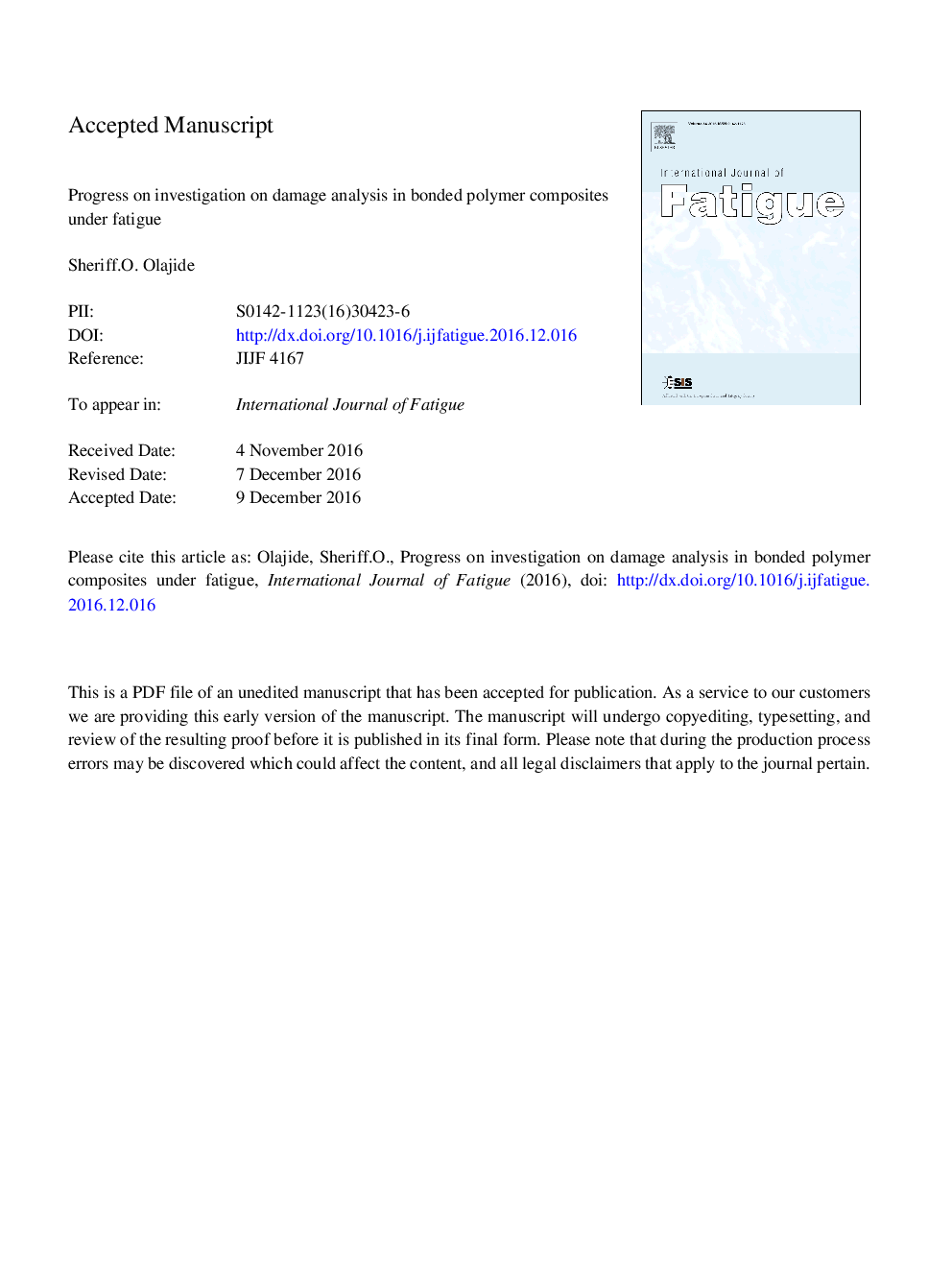| Article ID | Journal | Published Year | Pages | File Type |
|---|---|---|---|---|
| 5015171 | International Journal of Fatigue | 2017 | 28 Pages |
Abstract
Several unexpected fatigue failures of polymer bonded joints used to repair damaged critical structures such as aircraft control surfaces have been reported in-service. The fatigue life and fatigue life scatter in polymer bonded joints was found to be highly dependent on the rate of stiffness degradation of the polymer adhesive layer under fatigue cycle. Since stiffness is a function of shape and boundary condition and not just material, this makes the static strength of bonded joints unsuitable for assessing and predicting fatigue life. The stiffness degradation of the polymer bonded joint led to in-homogenous strain hardening of the adhesive layer leading to eventual brittle fracture. The in-homogenous regional strain hardening in the polymer joint adhesive layer was caused by fabricated defects and anomalies. Residual strain effect was found in bonded joints after fatigue failure. This was extrapolated to reason that there may be a mean strain effect in adhesively bonded joints under uninterrupted fatigue leading to further research in this area. This research article completes knowledge created in two earlier ones, completing a necessary step in many steps towards addressing fatigue of bonded joints.
Related Topics
Physical Sciences and Engineering
Engineering
Mechanical Engineering
Authors
Sheriff O. Olajide,
